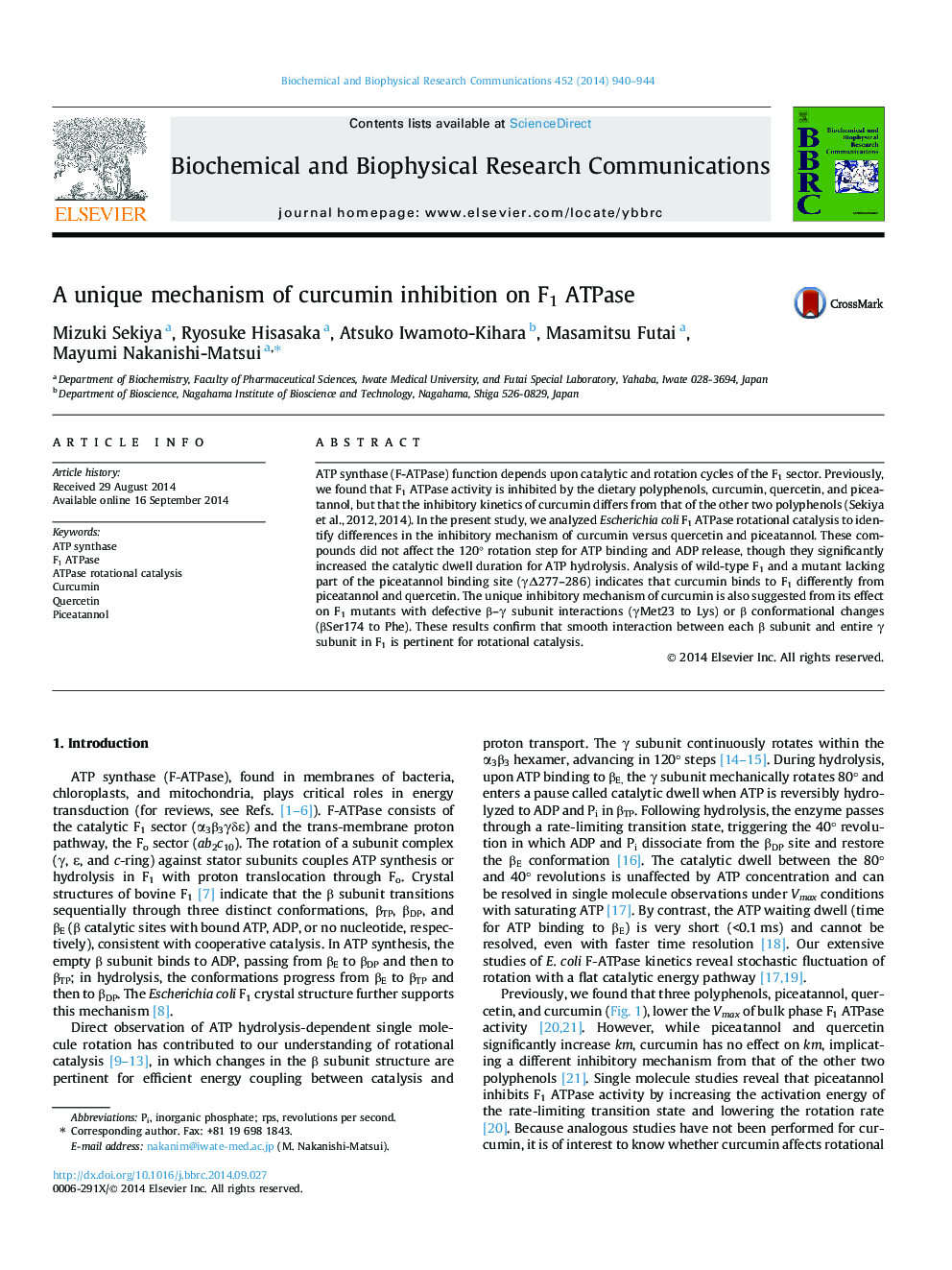| Article ID | Journal | Published Year | Pages | File Type |
|---|---|---|---|---|
| 10754324 | Biochemical and Biophysical Research Communications | 2014 | 5 Pages |
Abstract
ATP synthase (F-ATPase) function depends upon catalytic and rotation cycles of the F1 sector. Previously, we found that F1 ATPase activity is inhibited by the dietary polyphenols, curcumin, quercetin, and piceatannol, but that the inhibitory kinetics of curcumin differs from that of the other two polyphenols (Sekiya et al., 2012, 2014). In the present study, we analyzed Escherichia coli F1 ATPase rotational catalysis to identify differences in the inhibitory mechanism of curcumin versus quercetin and piceatannol. These compounds did not affect the 120° rotation step for ATP binding and ADP release, though they significantly increased the catalytic dwell duration for ATP hydrolysis. Analysis of wild-type F1 and a mutant lacking part of the piceatannol binding site (γÎ277-286) indicates that curcumin binds to F1 differently from piceatannol and quercetin. The unique inhibitory mechanism of curcumin is also suggested from its effect on F1 mutants with defective β-γ subunit interactions (γMet23 to Lys) or β conformational changes (βSer174 to Phe). These results confirm that smooth interaction between each β subunit and entire γ subunit in F1 is pertinent for rotational catalysis.
Related Topics
Life Sciences
Biochemistry, Genetics and Molecular Biology
Biochemistry
Authors
Mizuki Sekiya, Ryosuke Hisasaka, Atsuko Iwamoto-Kihara, Masamitsu Futai, Mayumi Nakanishi-Matsui,
